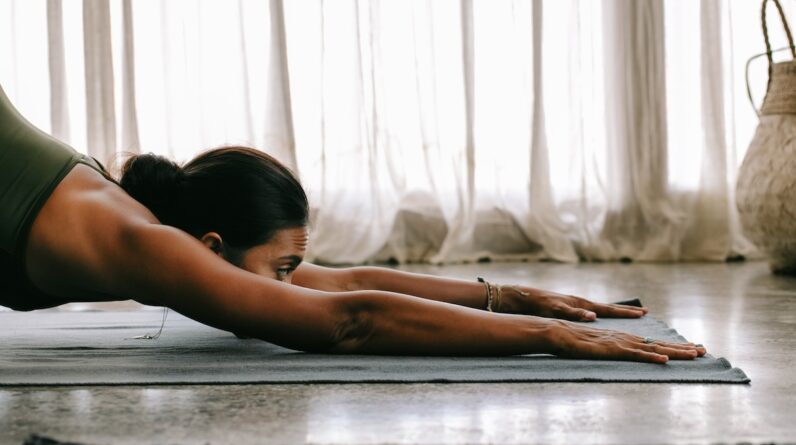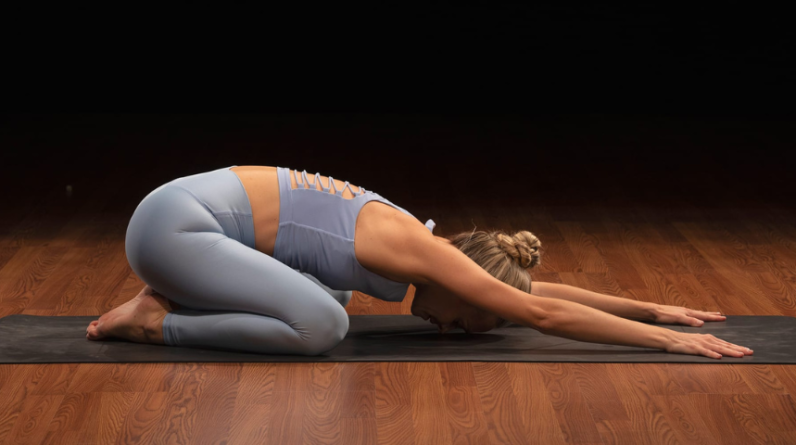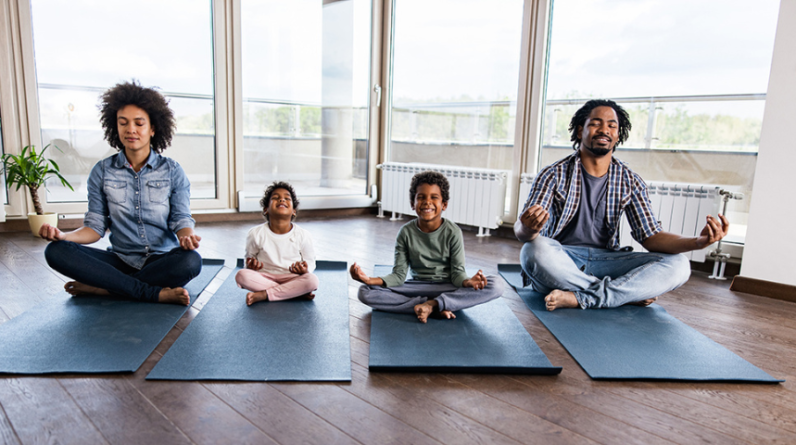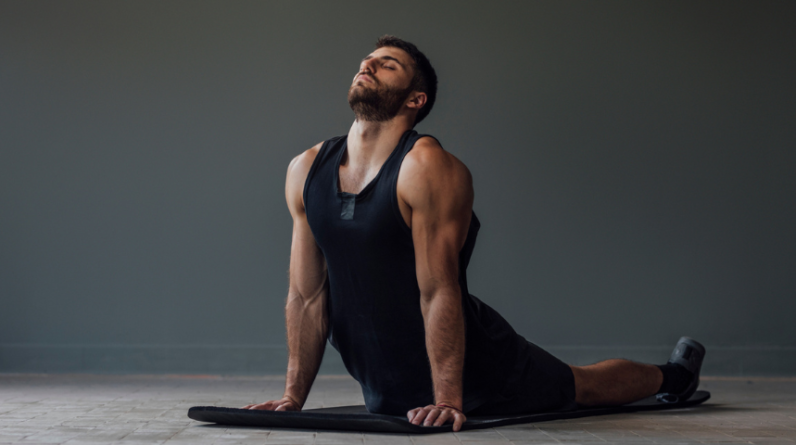
Adopting a hot yoga practice doesn’t have to mean spending tons of money on a studio membership or splicing your busy schedule to get to class. You can do budget-friendly yoga on your own time by turning a bathroom or spare room into an at-home hot yoga hideaway. Imagine a space to flow it out to your favorite song, flipping yourself upside down fully nude or simmering in a long-held stretch.
“Yoga, for me, is the art of finding and creating space for myself—on or off of the mat,” says Emily Taylor, yoga teacher and studio manager at Otium Studios. If you want to hop on the hot yoga bandwagon but don’t have a studio nearby or extra cash to dish out on a membership, here’s how you can create space for yourself and your practice at home.
But first, the benefits of hot yoga
Lower blood pressure, more limber muscles, and better bone density are some of the many reasons hot yoga continues to trend. However, the benefits of a heated flow aren’t limited only to the physical. “Hot yoga seems to give my body a release of energy that isn’t possible from yoga without sweat. They both bring release, but the heat levels up the intensity,” Taylor says.
What you’ll need to turn your bathroom into a hot yoga room
How to turn your bathroom into a hot yoga room
For many, the bathroom is already a space for self-care. It’s where we lock the door and steal moments alone, washing our faces and bodies to clear the muck of the day or invigorate ourselves for a new one.
Below, Taylor, along with McKensie Kirchner, yoga teacher and owner of Bride Vibe Yoga, shared some tips to up the zen in your bathroom by turning it into a quasi-hot yoga studio in six steps:
1. Clean and clear your space
Clean and declutter your bathroom before setting up your hot yoga equipment. “You don’t want to be glancing around the room with your cleaning to-do list at the front of your mind while you’re flowing,” says Kirchner. She also suggests using environmentally friendly cleaners made with your favorite essential oils so your senses are enhanced, not offended, as you practice.
2. Find the perfect space heater
There’s no need to invest hundreds of dollars; a simple portable infrared space heater will do the trick. Once you have your space heater, turn it on, pop a towel under the door, and shut it to let the space heat up before beginning so your body can begin to acclimate to the heat as soon as you enter.
Pro tip from Kirchner: “Don’t have it too close to your body or blowing on you directly. You do not want an accidental burn from the appliance or the hot air.”
3. Set the mood
If you plan to practice regularly in your at-home hot yoga room, adding some special touches is worth it—no need for extravagance. “Minimal is best. Plants, a favorite piece of art, and clean countertops can be enough,” Taylor says.
Practicing alone can be a sensual experience. Kirchner recommends using an essential oil diffuser to bring energizing or calming scents into the space and keep moisture in the room. Lighting can also go a long way. “You can turn on only the mirror lights and hang a colored scarf over them to enhance the mood,” she suggests.
If you choose to practice with music, don’t neglect your playlist. As yoga teacher Allison Falkenberry previously told Well+Good, “Music combined with a heated class can create a powerful community experience to move and connect in.” The same experience plays even if you’re practicing solo. What’s better? You get to choose the tunes. No one has to know if you enjoy a hot yoga sculpt session soundtracked by Nickelback.
4. Hit the right humidity level
It’s hard to get a studio-quality hot yoga sweat going in a dry room. Most studios keep the practice room at 40 percent humidity. Investing in a humidifier to work alongside your infrared heater can help augment the experience. If you don’t want to buy more equipment, running the shower for a bit at the beginning of your flow can also create some steam. Finding the right humidity level for your body may take some trial and error, but that’s the beauty of practicing at home: You can cater to your comfort.
5. Choose an online class
Subscribing to an online class platform like Alo Moves or seeing if your local studio streams classes can help you structure your home practice. Well+Good also has a full library of bite-sized and studio-length classes.
Free-flowing is also an option. Without the social pressure of being in a class, you can move freely. As a teacher, I start every home practice with unstructured intuitive movement, and often, exploring sensations that way helps me unlock new transitions and creative sequences to teach.
Is yoga at home right for you?
Yoga should be accessible to everyone. Bringing the studio to you is a great way to limit barriers to practice. Even if you find hot yoga at home isn’t for you, you can still supplant small yogic moments throughout the day in that space.
“Yoga for me is time to notice my breath or thoughts; time to be,” Taylor says.” It can be practiced while doing the dishes or shaving your legs. When things are done with intention, they become sacred. And that’s yoga.”







